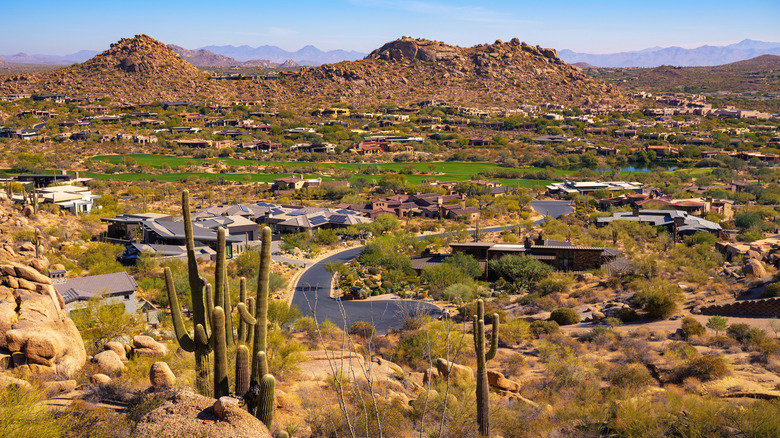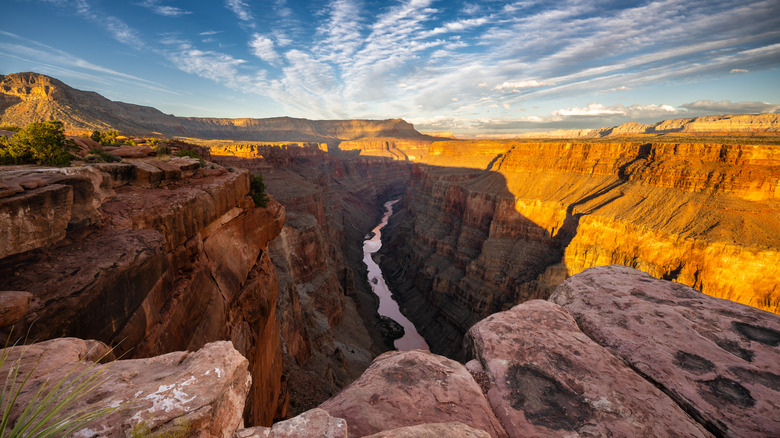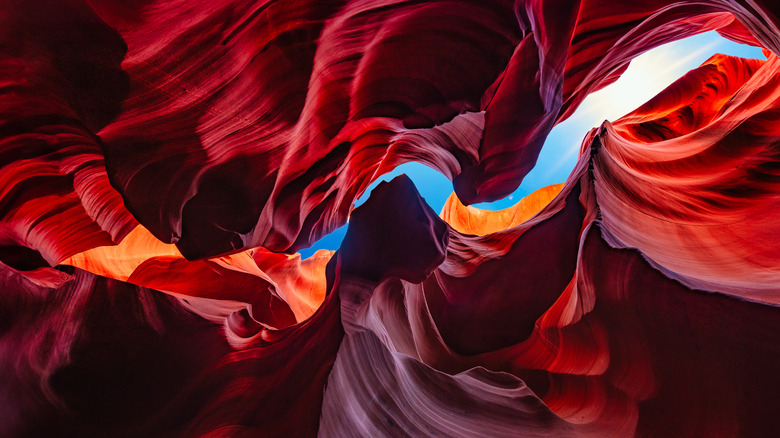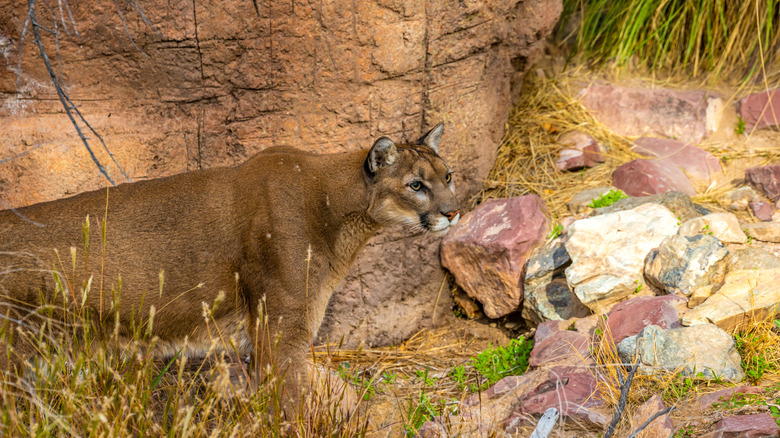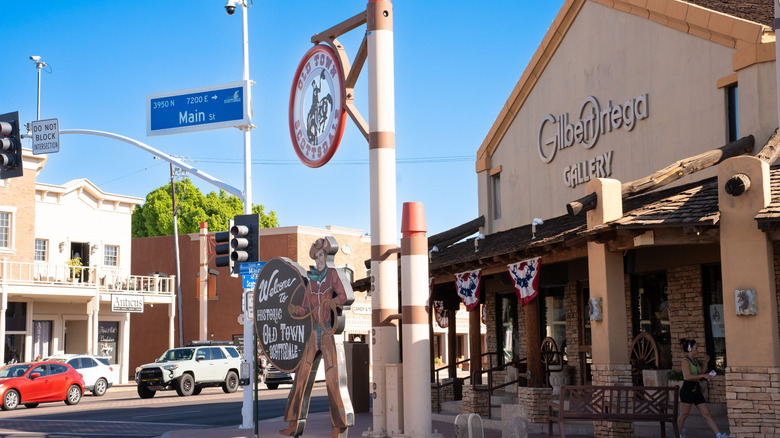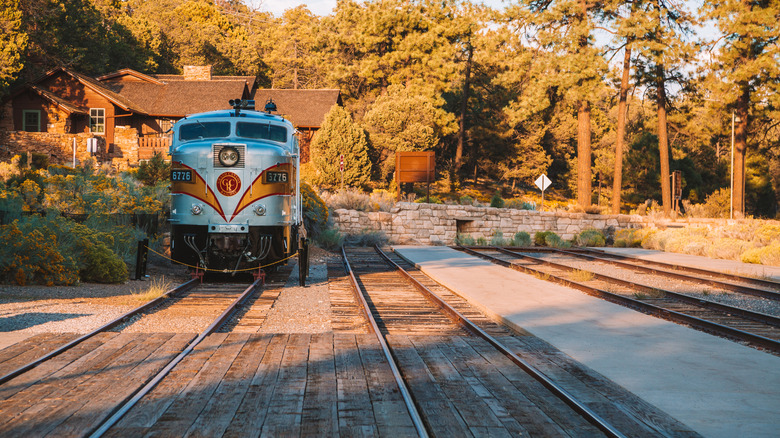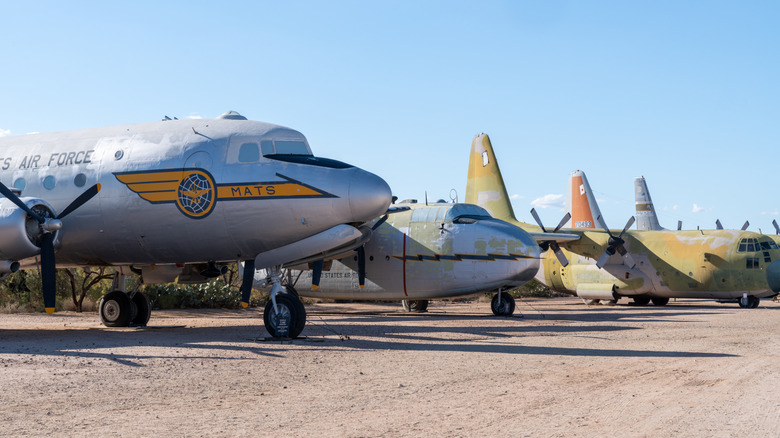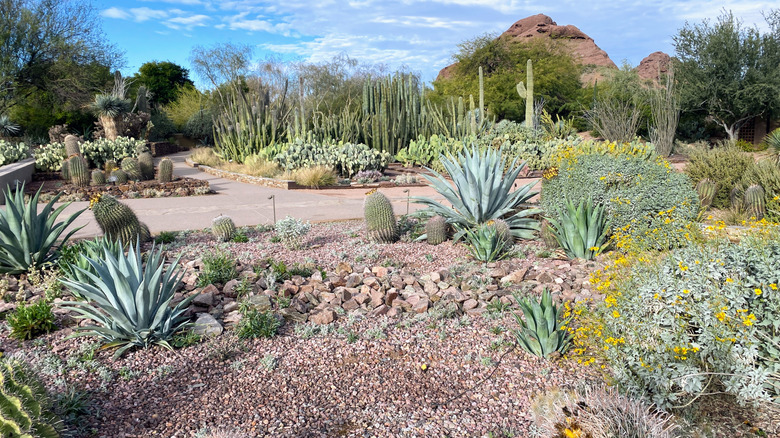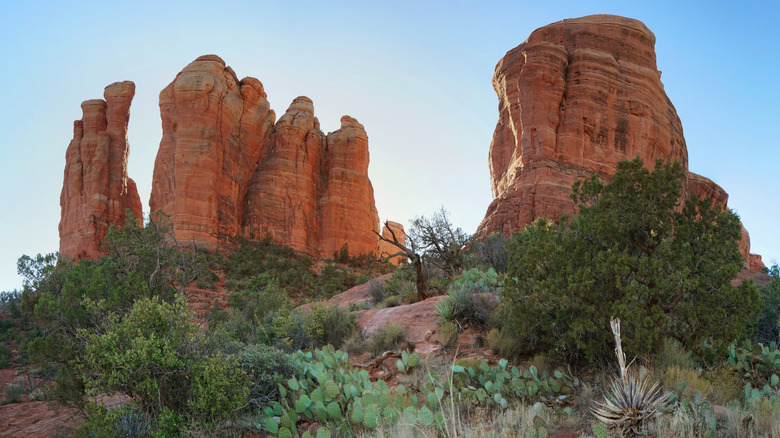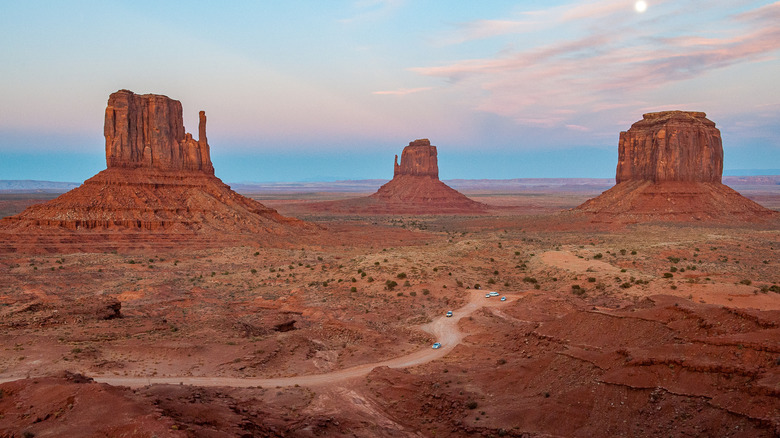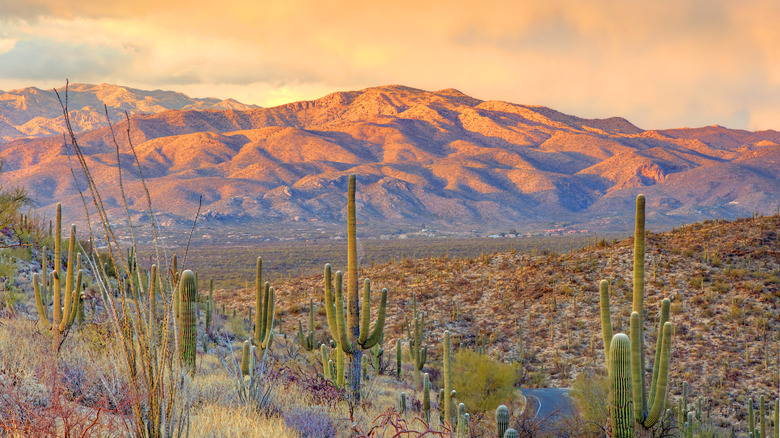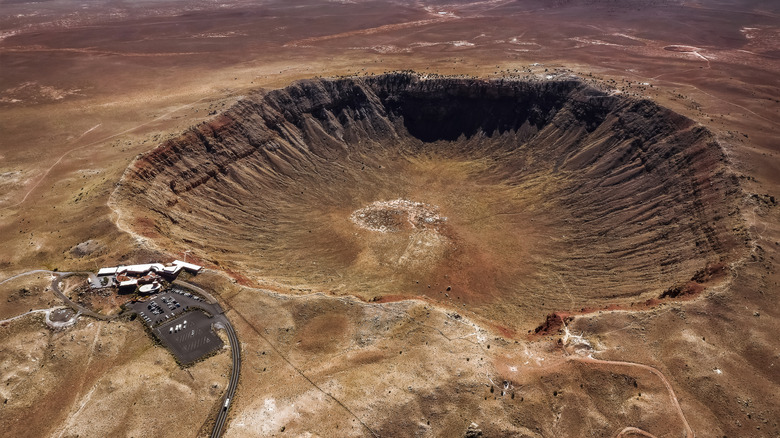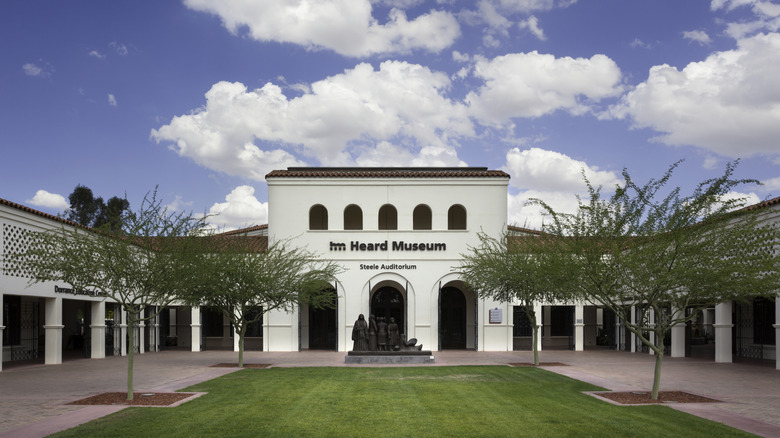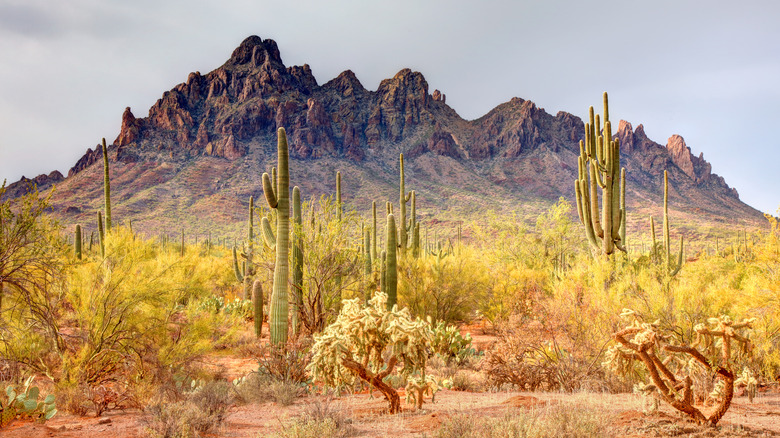12 Best Attractions In Arizona, According To Visitors
Arizona is a state full of stunning natural beauty, rich culture, and unforgettable experiences. From breathtaking canyon landscapes to world-class museums, there's something for every traveler to discover. In this state, you can take in panoramic views of natural wonders like the Grand Canyon, explore iconic red rock formations, hike through some of the nation's most beautiful parks, see the giant saguaro cacti that define the American Southwest, and learn about space, Native American heritage, and other treasured parts of U.S. history.
As a state that gets over 40 million visitors per year, Arizona has a ton to see and do for different travelers. Nature lovers will find endless trails and landscapes to explore, while those seeking culture and history can uncover the state's interesting stories, like the meteor crash site or Native American history. Islands reviewed visitor feedback, ratings, and traveler experiences across Arizona to determine the 12 best attractions — listed below in no particular order.
Grand Canyon
The Grand Canyon is one of the most iconic attractions not only in Arizona, but in the entire country. This massive geographical wonder is a mile-deep canyon that has been eroded over millions of years by the Colorado River. Today, the park spans over 1 million acres and welcomes nearly 5 million visitors per year.
Travelers have plenty of options when they visit the Grand Canyon — from where to enter the park to how to get around. You can take a helicopter ride, horseback tour, Hummer excursion, guided bus ride, hiking trip, and more. You can even hike down to the bottom of the canyon and raft in the river. The South Rim is the most popular part to visit, and it can get quite crowded in the summer. However, it's extremely accessible and can be done in a day, contributing to its popularity. There are several viewpoints, visitor centers, and hotels in the area. There is also the North Rim, which is over a four-hour drive from the South Rim, and the West Rim, which has attractions such as a large bridge with a glass bottom. There is also the East Rim, but it is much smaller than the rest.
Entrance to the Grand Canyon National Park is $20 – $35, depending on how you enter, but there are special discounts for seniors, people with disabilities, veterans, and other groups. A popular route around the South Rim is connected by shuttle buses, stopping at highlights such as Yaki Point, the Visitor's Center, Mather Point, the Yavapai Geology Museum, and more.
Horseshoe Bend and Antelope Canyon
Horseshoe Bend and Antelope Canyon are two popular add-ons for those visiting the Grand Canyon. That said, they are not officially part of the Grand Canyon — they're located about two hours north, along the Utah border. They're part of Glen Canyon National Recreation Area, a massive region covering over 1 million acres of land and Lake Powell. The two attractions are only about a 12-minute drive from one another, so people often visit both in one day.
Horseshoe Bend is just outside of Page, Arizona, and is known for its spectacular views of a U-shaped, 1,000-foot cliff overlooking the Colorado River. No wonder it's one of the most photographed destinations in Arizona. Once you arrive, there's a 1.5-mile hike to the famous overlook, which takes about 30 to 45 minutes. The viewpoint is open from sunrise to sunset with no entrance fee, though parking costs $10 at the time of writing. Horseshoe Bend is especially striking at sunrise and sunset, when the colors are most vivid and temperatures are cooler.
Antelope Canyon is only 11 minutes away by car, but visiting requires a bit more planning than Horseshoe Bend. The only way to visit is by joining a tour led by a local Navajo guide. The tours range in price, from around $50 to over $100, depending on the company, length of tour, time of day and year, and what's included. Upper Antelope Canyon is famous for its light beams that shine through from the top of the canyon, and tours tend to be more expensive and crowded. Lower Antelope Canyon is less popular and requires going up and down ladders throughout your walk in the canyon.
Southwest Wildlife Conservation Center
The Southwest Wildlife Conservation Center ranks as the top-rated attraction in Scottsdale on Tripadvisor. The nonprofit rescues and rehabilitates Arizona-native animals found abandoned or injured, and more than 70% are eventually released back into the wild, while others live out their lives at the sanctuary.
Visitors can see wild animals such as mountain lions, coyotes, wolves, bobcats, black bears, and more, depending on the animals they are working with at the time. The sanctuary offers three options for visiting: the Walk with Wildlife Tour, Twilight Tour, or Full Moon Tour. Each lasts about two hours, and reservations are required. Prices range from $10 for kids to $35 or $40 for adults, depending on the tour.
One visitor wrote in a Tripadvisor review, "Our family had an amazing time at the Southwest Wildlife Conservation Center. From the 6 year old to Grandma, we all equally loved the experience. It gave us all an deep appreciation for the Arizona Wildlife and the balance of nature. Our guide, a volunteer made it a special experience. The people here do some great things. I highly recommend you give it a visit."
Old Town Scottsdale
Visitors can step back in time when they visit Old Town Scottsdale, a favorite neighborhood in the state for amazing culture, shopping, and food. There's plenty to do in this walkable neighborhood, which features seven museums, two theaters, more than 50 art galleries, 300 shops, 100 restaurants and bars, and 45 public art installations.
There are a variety of shops in the area, selling everything from Western wear, Native American jewelry, to high fashion favorites like Gucci, Louis Vuitton, and Prada. Old Town is also filled with souvenir shops, where you can take home items such as trinkets, art, candy, toys, and more. If you work up an appetite after all that shopping, there are plenty of places to grab a bite and a drink. There are places with classic American favorites, Mexican cuisine, high-end dining, Mediterranean restaurants, Italian food, and more. Old Town is also home to plenty of Western-themed saloons and modern bars filled with live music, dancing, and plenty of drinks to go around. On Saturdays, you can visit the farmers market, which features more than 100 local vendors selling produce, meats, honey, desserts, breads, drinks, and more.
Old Town hosts several events throughout the year, including various holiday celebrations, festivals, musical performances, and more. There are also special events around Día de los Muertos, Halloween, Christmas, and more. For art lovers, the weekly ArtWalk takes place every Thursday evening through Old Town's galleries and studios.
Grand Canyon Railway
The Grand Canyon Railway is a perfect activity for history buffs. Operating since 1901, it takes travelers on a journey through history aboard restored railcars with scenic views of the Arizona landscape. During the ride, passengers can hear stories about the Grand Canyon's history and the railway's legacy, along with live entertainment and a Wild West reenactment. All rides start and end at the Grand Canyon Railway Depot, located in Williams, Arizona, and are an all-day tour. The train runs daily at 9:30 a.m., arriving at the Grand Canyon's South Rim at 11:45 a.m. This gives visitors more than three hours to explore before the return trip at 3:30 p.m., which arrives in Williams at 5:45 p.m.
There are six classes to choose from, each with its own amenities and prices, making the train a wildly affordable way to see the Grand Canyon. The least expensive class is a 1920s-style railcar with bench seats and no air conditioning, just open windows. An adult ticket is $70 at the time of writing. Other classes offer amenities such as air conditioning, bar service, and snacks. First class costs about $170 per adult, and more luxurious, private cars run up to $240 per adult and do not permit children.
A café car is available to all passengers, selling snacks, drinks, sandwiches, and alcoholic beverages. Actors often stage a fake train robbery, musicians perform, and each car has a host who will educate you about the Canyon and the railway. For further savings, you can also book a hotel package with the train.
Pima Air & Space Museum
The Pima Air & Space Museum in Tucson is a favorite among visitors to the city, with thousands of 4 and 5-star reviews on Tripadvisor and Yelp. It is home to one of the world's largest aircraft collections, with over 400 planes across 80 acres and 125,000 artifacts to see.
Exhibits span both outdoor displays and massive indoor hangars, showcasing private, military, and commercial aircraft. Some exhibits highlight the contributions of underrepresented groups, such as the Black Aviators and Women in Flight exhibits. There are also planes from World War II, planes painted by artists, seaplanes, bombers, an exhibit on the Space Race, and an exhibit on drones.
Tickets for adults are $22.50 per day, or $29 for two days. Discounted rates are available for veterans, active-duty military, seniors, Pima County residents and children. Tickets are not sold in advance, and the museum's hours are 9 a.m. to 3 p.m. daily at the time of writing. There are also tours available for an additional cost, such as a tram tour for $10, an audio tour for $5, a private walking tour for $75, and more. The museum also offers classes for students on engineering and aviation.
Desert Botanical Garden
The Desert Botanical Garden is a place you can keep coming back to and "never get sick of," says one Tripadvisor reviewer. This garden, located in Phoenix, features over 50,000 plants across 140 acres of trails and gardens, including over 500 rare and endangered species.
The garden offers several trails, most of which are wheelchair- and stroller-accessible. Along the trails, you can learn how plants survive in such hot and dry conditions, see butterflies and hummingbirds, and discover how indigenous people have used the native plants to survive. There are also events hosted regularly, including live music, dog-friendly days, butterfly exhibits, sound bath meditations, art exhibits, children's activities, yoga classes, and more. The on-site restaurant, Gertrude's by Tarbell's, is open daily and focuses on local ingredients and dishes, led by a James Beard-nominated chef.
The garden is open October 11 through May 10 every day unless it's a holiday. General admission costs $40 for adults and $20 for children at the time of writing. Active-duty military members and children under 2 enter for free.
Red Rock State Park
Red Rock State Park is home to some of Arizona's most iconic landscapes, creekside trails, and serene views. The famous landmarks include Oak Creek Canyon, Coconino National Forest, Montezuma Castle National Monument, Boynton Canyon Trail, and many more. Stretching across 286 acres just outside of Sedona, the park can be explored by car or on foot along its many trails, which lead to stunning views and unique landmarks.
The rocks get their signature red color because of the high iron content in the sandstone. The park is full of trails for hiking, and there are even horseback riding and biking paths. Popular trails include Eagle's Nest, followed by Javelina and Kisva. Eagles Nest Trail is 2.8 miles long, or about an hour long, and offers amazing views of the red rocks. Javelina Trail and Kisva Trail are shorter at 1.8 miles each, and they're considered easy and good for all levels.
The park is open from 8 a.m. to 5 p.m., with the last entry at 4:30 p.m. There's also a visitor center which has some exhibits, educational films, and a gift shop. The park costs $10 per adult and $5 for children ages 7 to 13 — anyone younger is free.
Monument Valley Navajo Tribal Park
Monument Valley Navajo Tribal Park is a 17-mile looped road through the most iconic views of the famous mesas and sandstone buttes that Arizona is known for. It's one of the most photographed places on Earth, with landmarks that rise between 400 and 1,000 feet high. The landscape's unique shapes (mesas or buttes) are due to erosion. A mesa is a wide, flat structure that has had its sides eroded away. A butte is a mesa that has worn away significantly more and is much taller than wide.
There are 11 designated pullouts along the drive to take photos and admire the scenery. Highlights include The Mittens, Elephant Butte, The Three Sisters, John Ford's Point, Camel Butte, Artist's Point, and more.
The park is open from 8 a.m. to 5 p.m., with the last entry at 2:30 p.m. during the winter and 4:30 p.m. during the summer. Admission costs $8 per person. Visitors warn of long wait times during peak season to drive the loop, which occurs from May to September. The dirt roads can be rough, so visitors recommend a 4x4 vehicle or a guided tour.
Saguaro National Park
Saguaro National Park, located right outside of Tucson, is home to the nation's largest cacti, as well as breathtaking desert scenery, plenty of hiking trails, camping, and more. Here you can see panoramic views of the Santa Catalina, Tortolita, Santa Rita, Tucson, and Rincon mountains.
The saguaro cacti can grow up to 40 feet tall and can live more than 150 years. The flower that blooms atop the cactus, the saguaro blossom, is Arizona's official wildflower — one with deep cultural and ecological significance. In the past, Indigenous peoples have used the saguaro as a source of food and shelter. Their fruits are made into syrups, and the cacti's bodies are used as building materials.
The national park has two visitor centers: the Rincon Mountain Visitor Center and the Red Hills Visitor Center. The Rincon Mountain Visitor Center is open daily from 9 a.m. to 5 p.m. from October through May and 8 a.m. to 4 p.m. from June through September, though the park itself is open 24 hours a day. This visitor center serves as a starting point for the Cactus Forest Loop Drive and hikes of the Rincon Mountains. The Red Hills Visitor Center is the starting point for the west side of the park and views of the Red Hills, and has the same hours as the Rincon Mountain Center. The park costs $15 per person without a vehicle, or $25 per vehicle at the time of writing.
Meteor Crater and Barringer Space Museum
The Meteor Crater and Barringer Space Museum is home to the world's best-preserved meteorite impact site. Located about an hour outside of Flagstaff, this site was used as a training site for astronauts and now attracts visitors from around the world. The crater is nearly a mile wide and 550 feet deep, and is also located next to a museum, where you can learn more about the region's geology and the history of space exploration.
The meteor that caused this crater hit Earth over 50,000 years ago with a force 150 times greater than an atomic bomb. It was approximately 150 feet wide. When visiting, you can look at the crater in an air-conditioned viewing area, outside on an observation deck, on a trail, or on a guided tour.
The crater is open from 8 a.m. to 5 p.m. daily, and tickets range from free for active-duty military and children under 5 years old to $29 for adults. The museum features exhibits and hands-on activities that teach children about meteorology and space. The museum also regularly hosts events, such as Asteroid Day and Sci-Fi Fest. For those looking for an even more immersive experience, you can also stay at the RV camp. The Meteor Crater RV Park is open year-round and also has a clubhouse with a fitness room, lounge, patio, Wi-Fi, showers, and a computer lab. There are also picnic tables, a recreation room, and, since it is dog-friendly, your furry friend can come along.
Heard Museum
The Heard Museum in Phoenix, Arizona, showcases Native American art and culture, from historical to modern pieces. The museum has permanent exhibits about Southwestern Indigenous culture, American Indian boarding schools, sculptures, photography, veterans' stories, and more. The museum also hosts events to help the public learn and experience Native American culture, such as moccasin-making classes, jewelry making, painting classes, art exhibit previews, dancing performances, and more.
The museum is open daily from 10 a.m. to 4 p.m. Admission costs $26 for adults, $21 for seniors and military members, and $10 for students and children ages 6 and older. Children under 5 years and American Indian adults and children with a tribal ID receive free admission. The museum offers free tours every day at 10:30 a.m., noon, 1 p.m., and 2:30 p.m. There are also private, personalized tours available for purchase.
"We'd planned to spend a few hours at the Heard Museum, but ended up being there the better part of the day. Even so, I still don't think we covered everything. The exhibits are beautifully done," said one Tripadvisor reviewer.
Methodology
For this article, I reviewed multiple sources featuring visitor feedback on Arizona's top attractions, including Tripadvisor, Yelp, Reddit, and various travel blogs. I made sure to include diverse activities and attractions to appeal to a broad range of travelers — from nature lovers to city explorers. I made sure to explore different parts of Arizona, too. Finally, the attractions are not listed in any specific order.
